Yamanaka Group
Trade Business Metal Materials Functional Materials
Metal Fiber Naslon®
The Naslon® metal fiber combines the strength of stainless steel with the suppleness of fiber, making it suitable for a very wide range of applications.
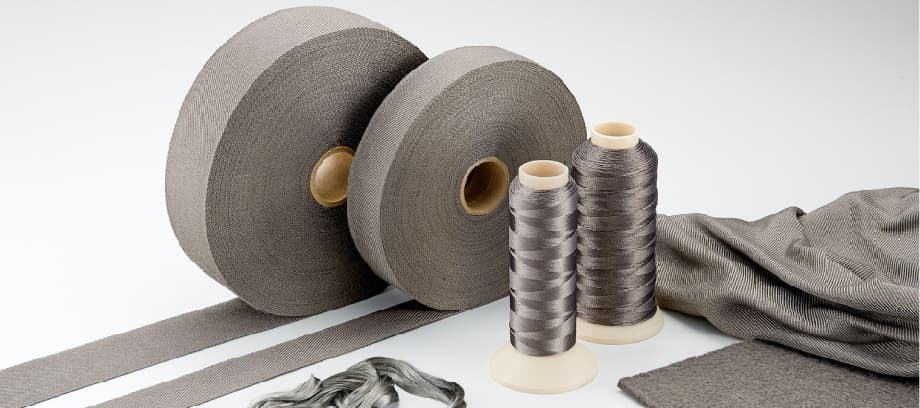
Metal Fiber Naslon®
The major advantage of Naslon® is the fact that it provides the flexibility which conventional inorganic fibers were unable to offer and can be processed like other organic fibers while offering the superior properties of stainless steel.
Naslon® is a registered trademark of Nippon Seisen Co., Ltd.Material
The product can be produced in each grade of stainless steel. Currently, the two main types being manufactured are as described below.
| Chemical composition (%) | |||||||||
|---|---|---|---|---|---|---|---|---|---|
| Steel grade | C | As | Mn | P | S | Ni | Cr | Mo | Fe |
| SUS316L | 0.030 or lower | 1.00 or lower | 2.00 or lower | 0.040 or lower | 0.030 or lower | 12.00–15.00 | 16.00–18.00 | 2.00–3.00 | Remainder |
| SUS304 | 0.08 or lower | 1.00 or lower | 2.00 or lower | 0.040 or lower | 0.030 or lower | 8.00–10.50 | 18.00–20.00 | - | Remainder |
Fiber diameter
8 μm and 12 μm are standard, with other sizes also available.
Corrosion resistance
The product has excellent weather resistance, and excellent resistance to corrosion by nitric acid, alkalis, organic solvents, etc. It also generally has good tolerance of chemicals, but it needs to be noted that it is susceptible to damage by reducing acids such as hydrochloric acid and sulfuric acid and chemicals containing halogen groups.
Heat resistance
Naslon® in its heat resistant fiber state has a different life depending on the application, but it can be used within a range up to the stainless steel annealing temperature of 1,150°C (in inert gas). Note: Melting point 1,400°C to 1,500°C
Test conditions
Sample material: Cloth A
Heating method: Left in atmospheric muffle furnace
Sample dimensions: 50 mm width × 200 mm length
| Exposure conditions | Strength (kg) |
Strength retention rate (%) (Material = 100%) |
Sample material state |
|---|---|---|---|
| Material | 69.5 | 100 | - |
| 300°C × 5 hrs | 72.0 | 104 | No abnormality at all |
| 400°C × 5 hrs | 76.0 | 110 | Change to purple-brown |
| 500°C × 5 hrs | 68.0 | 99 | Change to purple-brown |
| 600°C × 5 hrs | 55.0 | 80 | Partial strong coloring |
| 700°C × 5 hrs | 52.0 | 75 | Partial strong oxidation |
| 750°C × 5 hrs | 45.0 | 65 | Partial strong oxidation |
Naslon® Products
Yarn and woven fabrics
-
Feature 1
Fits any shape because it is a fiber.
Cutting with scissors and sewing are of course possible. -
Feature 2
Does not burn because it is a metal.
Laser cutting and spot welding are also possible. -
Feature 3
Has corrosion resistance, thermal conductivity, and electrical conductivity because it is stainless steel.
-
Feature 4
As a heat-resistant cushioning material, it can be molded into any shape as an alternative to asbestos.
-
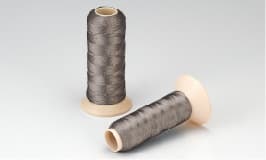
Features: Offers the flexibility of organic fibers while maintaining the characteristics of metals.
Application examples: Sewing machine thread, heating elements, reinforcing materials, packing
-
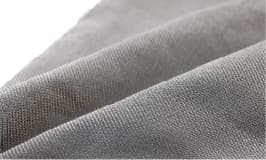
Features: 100% stainless steel woven cloth Cutting with scissors and sewing with sewing thread are possible.
Application examples: Heat-resistant cushioning material, silencers, heat-resisting bellows, bag filters
-
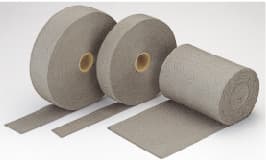
Features: Band-shaped products which are twilled like a cloth. Both ends will not fray.
Application examples: Jigs, heat-resistant wrapping for pipes etc., conductive tape
-
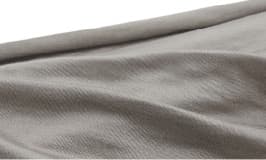
Features: Product with a similar structure as a knitted sweater. Highly elastic, breathable, provides cushioning in the thickness direction.
Application examples: Cushioning material for automotive glass molding, glass plate molding, transportation (suction method), etc.
-
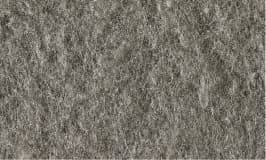
Features: Stainless steel fiber is cut to a suitable length and made into a uniform cotton-like shape by a fiber opening machine.
Application examples: Heat insulation material, gas filter medium
-
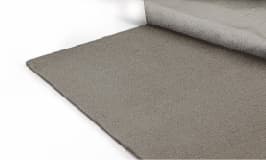
Features: Needle-punched cotton-like fibers are intertwined to create a felt structure.
Application examples: Heat-resistant cushioning material, sound absorbing materials, heat insulation material, silencers
-
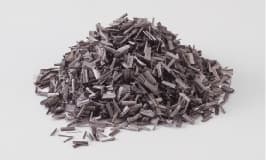
Features: A collection of many continuous stainless steel fibers is subject to sizing with resin, cut and pelletized.
Application examples: Electromagnetic shielding, antistatic material, asbestos alternative (packing material)
Filters
-
Application 1
Polymer industry
Filters for filtration of high viscosity liquids such as fibers, films, plastics (for raw material purification, monomers, polymers, cooling gas flow straightening, spun films)
-
Application 2
Chemical industry
Various filters for petroleum refining and for petrochemical plants
-
Application 3
Pharmaceutical and food industry
Process filters, sterilization steam filters, filters for various chemicals, food synthesis, purification, crystallization, and recovery
-
Application 4
Hydraulic and pneumatic equipment
Filters for hydraulic oil and lubricating oil
-
Application 5
Measuring equipment and instruments
Filters for analysis sampling, instrumentation air filters
-
Application 6
Others
Filters for fluid plates, various gases, fuel oil, cutting oil, and cleaning oil
| Product name | Filtration accuracy (μm) | Material | Service life | Pressure loss | Strength | Restorability | Response to needs |
|---|---|---|---|---|---|---|---|
| Excel Pore (NP) | 0.1–5 | Stainless steel short filaments | ○ | ○ | ○ | ○ | ○ |
| Fine Pore (NF) | 1–120 | Stainless steel long filaments | ◎ | ◎ | △ | ○ | ◎ |
| NPM Filter | 5–70 | Stainless steel powder | ○ | △ | ◎ | △ | ○ |
| Fine Met | 10–500 | Stainless steel wire mesh | △ | ○ | ○ | ◎ | △ |

